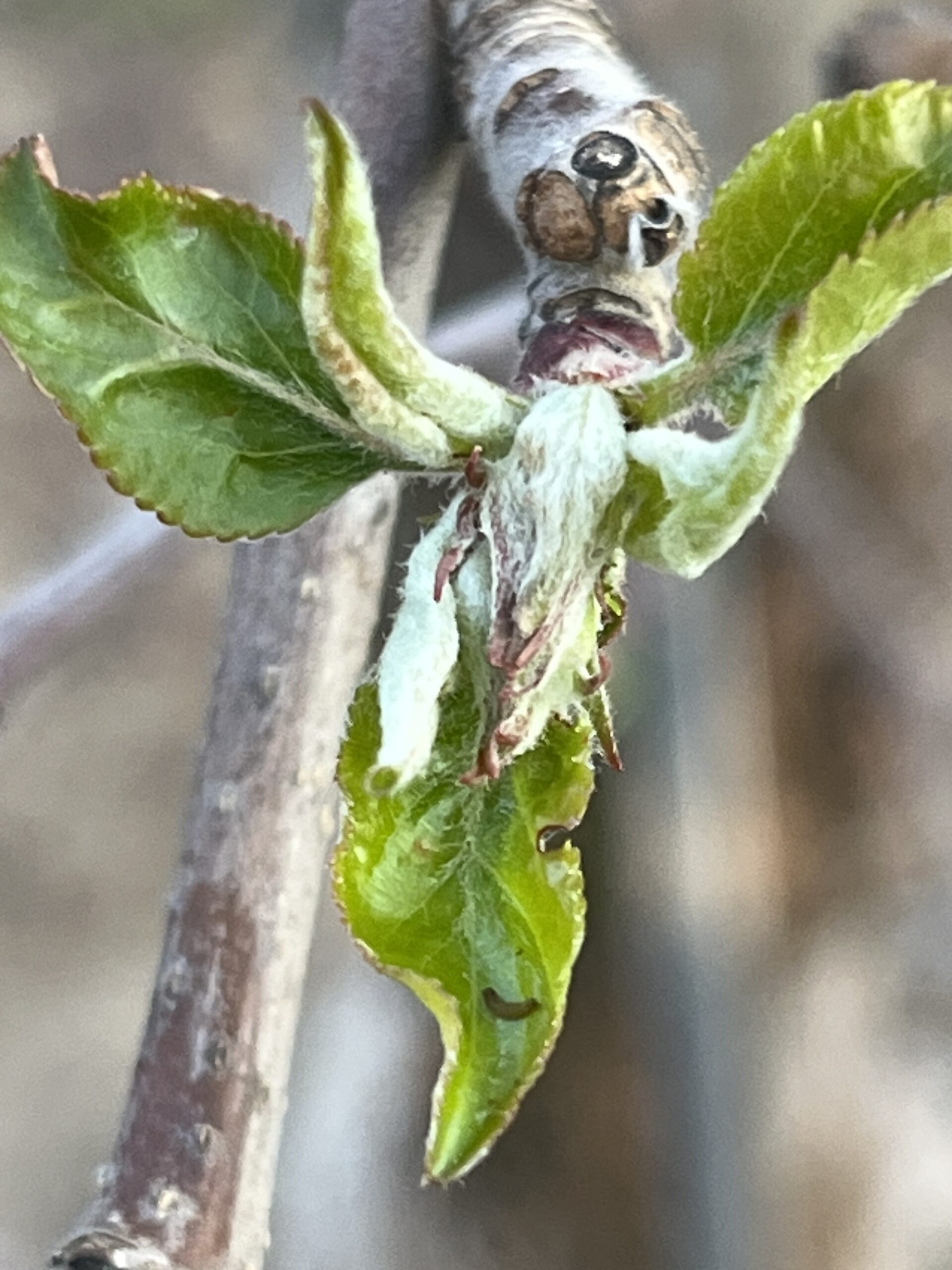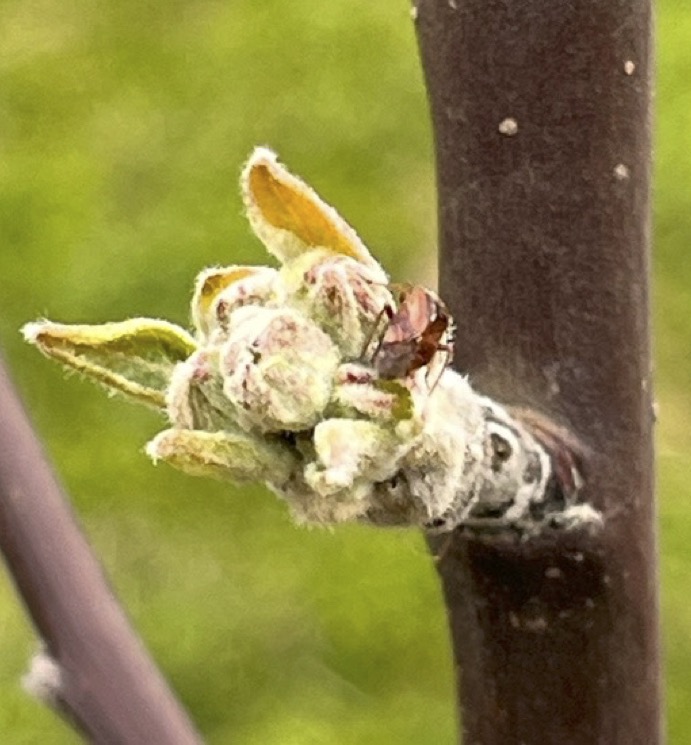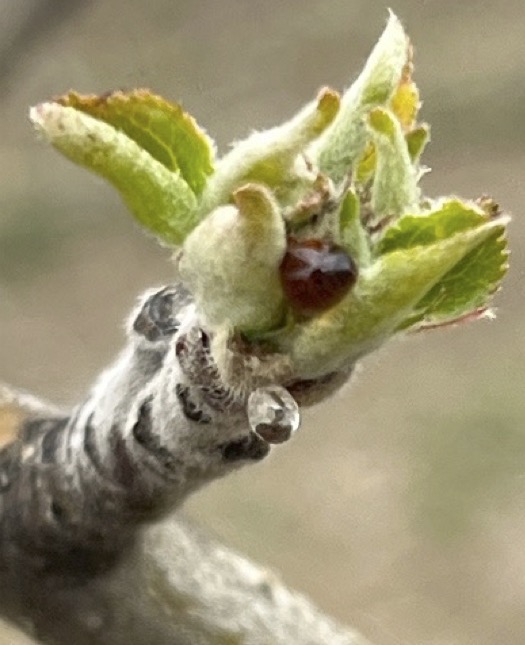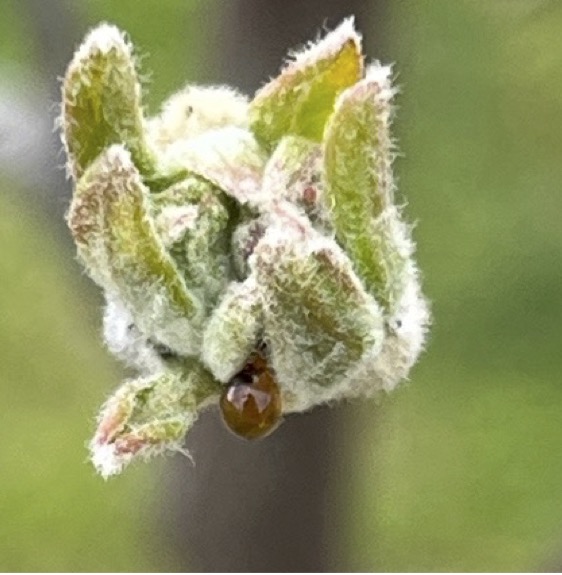Tarnished Fruitlets: Tight Cluster Tarnished Plant Bug Management.
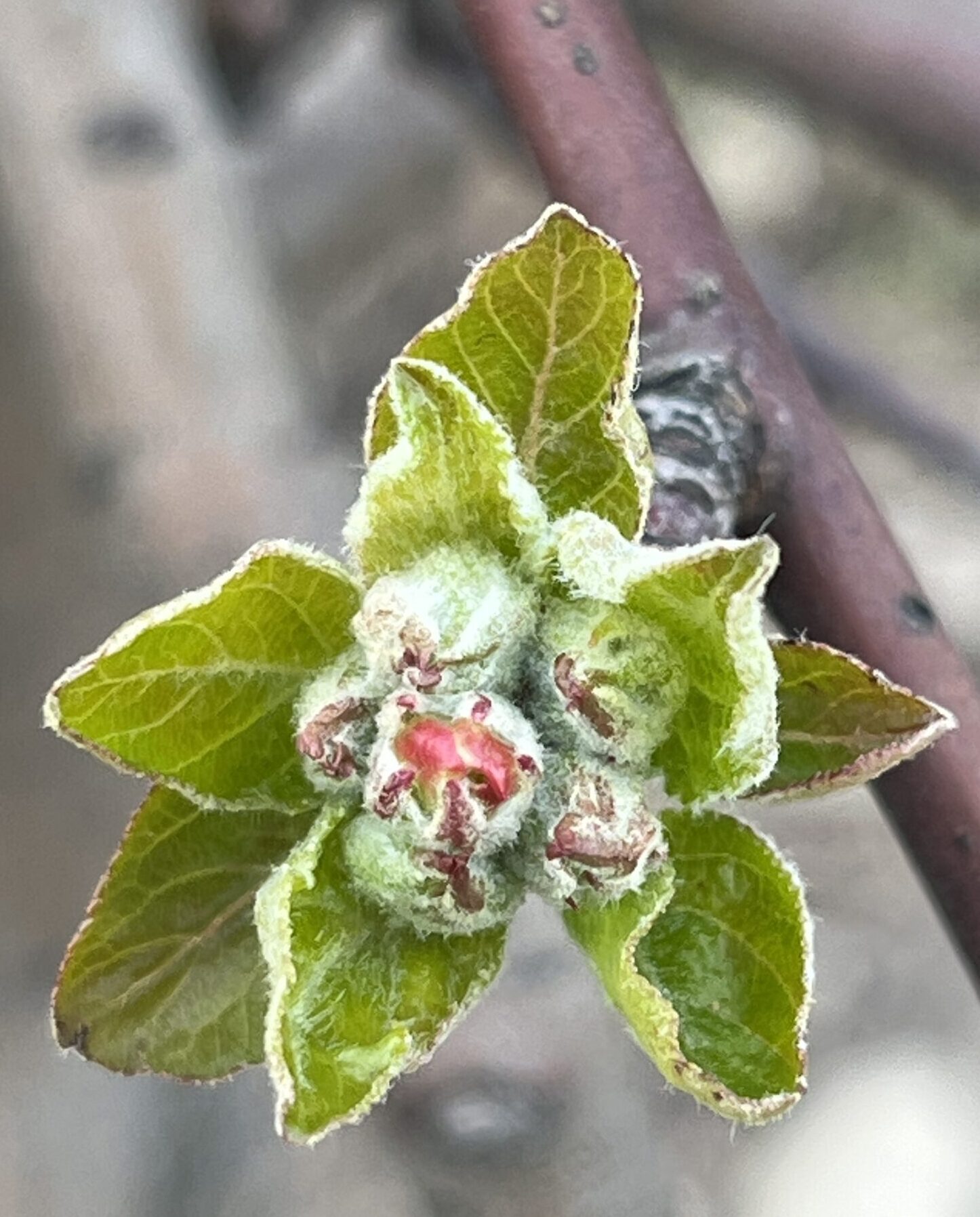
Overview: Southern winds are predicted to begin coasting into the Hudson Valley with increasing temperatures into this weekend, bringing pome fruit into late tight cluster and early pink in the earliest varieties.
It seems like it’s been a slow train a coming with a ‘sustained cold winter’ and ‘average year phenology. Yet now we begin to see bloom in stone fruit, pear with apple varieties with fully expanded fruit cluster leaves, and a few varieties showing signs of pink, such as Ruby Frost.
If the forecasted temperatures hold true, we will be into the mid to upper 70’s into the weekend.
Insects of primary concern this week include endemic populations of the aphid complex, specifically Rosy and Green Apple Aphids, San Jose Scale, Obliquebanded and Redbanded Leafrollers, Speckled Green Fruitworm, Mullen Plant Bug and Tarnish Plant Bug. Too early for the Plum curculio as they remain in hibernation sites until sustained warming of 60-70F temps arise.
These warm temperature days now drive insect activity. Observations in earlier scouting efforts during the week found Lepidopteran larva in flower cluster feeding injury.
And as such, we are seeing the onset of tarnished plant bug (TPB) Lygus lineolaris (Palisot de Beauvois), beginning to cause injury to flower clusters. Injury is specifically in orchard blocks with a robust broad leaf weed complex. Typically this occurs along ponds or in newly planted blocks where the broad leaf weed complex has not been adequately addressed.
A pre-bloom pest of apple, TPB is a true bug in the order Hemiptera, with piercing-sucking mouthparts such as is found in the cicadas, aphids, leafhoppers and mullen plant bug.
Tarnish plant bug feeding has been observed in a number of orchard blocks this week, especially evident from clear to amber droplets forming near the base of developing flowering parts in apple.
The tarnished plant bug causes injury to fruit during feeding and oviposition on developing fruit. Bleeding of sap occurs on flower and fruit stems, twig and shoot injury as teh insect feeds. On apple most eggs are laid in the developing fruit starting at bloom.
The insect feeds first on buds and later on developing fruit resulting in small droplets of exudate on the surface of injured buds. Within 1 or 2 weeks, the flower clusters may appear dried and the leaves distorted, with a distinct hole where the insect fed. In general, later damage to developing fruit is more important than earlier feeding on flower buds.
On apple, TPB feeding can cause punctures or deep dimples to form as the fruit develops, downgrading fruit quality. Most damage will occur near weedy areas, along ponds or wooded edge with broadleaf ground cover.
The adult TPB has a color appearance ranging from dull brown to black. The rear half of the forewings are membranous and are bent downward with a distinct yellow triangle behind the head.
The adult bugs hibernate under leaf liter, clover, alfalfa, mullein and protected places of stonewalls and tree bark. They become active at relatively low temperatures (> 46oF) with feeding becoming pronounced at temperature at or above 70oF, between tight cluster and bloom period of apple.
Tarnished plant bugs feed on a wide range of hosts including apple, apricot, cherry, pear, peach, plum and quince, small fruits such as strawberry and raspberry as well as flowers, vegetables and field crops. They have multiple generations per year. They can migrate into apple or stone fruit from another crop or weed host and should be assessed during the pre-bloom and early post bloom period to determine levels of activity.
Orchards with weed host density are more prone to damage. Control of weed hosts, such as common mustard weed, has been shown to reduce fruit injury.
TPB management: To effectively monitor TPB, use unbaited, non-reflective, white sticky boards hung low in the tree canopy. Economic injury levels between trap captures and fruit injury show that 2% fruit injury will occur if 3.0 to 4.4 adult TPB are captured in white sticky traps(1).
Most moderate density orchards can suffer up to 1% damage before economic injury occurs given the cost of management. Orchards growing 1000 bu./A can gain higher profitability margins using more conservative economic injury levels, especially growing higher valued varieties. Perimeter applications may also provide significant decrease in TPB activity as much of the insect pressure comes from TPB presence in the broadleaf weed complex residing along the outside orchard edge.
Few ‘Soft’ insecticide management options are available that are highly effective against the adult TPM.
Beleaf (Flonicamid) is labeled against aphids and plant bugs in NY for pome fruit and stone fruit; the label classifies it as a member of the pyridinecarboxamide family, an IRAC Section 29 material. It has a 21 day PHI and 12 hour REI.
Cornell Guidelines reports that it has not been tested in NY field trials, but other researchers have reported good efficacy against green peach aphid and tarnished plant bug in peaches. The label also lists apple aphid, black cherry aphid, rosy apple aphid, spirea aphid and woolly apple aphid. It has a low bee poisoning hazard.
In studies at the HV Research Laboratory, Beleaf showed a moderate degree of efficacy (Table below).
Pyrethroids are most effective under cool temperatures as they are more readily detoxified as temperatures exceed 70F.
The pyrethroids (Asana, Ambush, Baythroid, Danitol, Pounce, Warrior ) are most effective to control TPB, followed by the neonicotinoid group including Actara, Assail and Avaunt, which are moderately effective.
Pyrethroids and neonicotinoids will also impact many of the insect pests damaging fruit, such as RAA, STLM and early immigrating PC.
The overwintering OBLR populations and injury will be reduced by the pyrethroid class, however San Jose scale will require a targeted and designated application of 2-1% oil at dormant-1/2 Green respectively, application of Esteem (oil or other penetrant not required), Centaur (penetrant required) or Venerate XC application.
1. 1982. PROKOPY, RONALD J.; HUBBELL, GEOFFREY L.; ADAMS, ROGER G.; HAUSCHILD, KAREN I. Visual Monitoring Trap for Tarnished Plant Bug Adults on Apple
Source: Environmental Entomology, Volume 11, Number 1, February, pp. 200-203(4)
